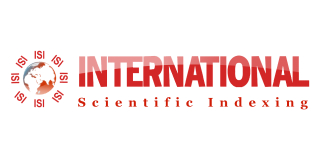Loss of a loved one is always painful. When the relationship is deep it is difficult to accept the death of the dear one and it remains unresolved grief. In the West Grief Therapy is widely practiced. In Indian context where the family support system is stronger than the western countries, the incidents of unresolved grief are rare. However of late, the number of unresolved grief is on the increase as per the news reports of increasing suicides among those suffering from unresolved grief. Unfortunately several such cases indicate the symptoms of Affective Disorder or Psychotic Disorders. Only a clear diagnosis could identify the unresolved grief and do proper therapeutic intervention. This study narrates two case studies one of a teenager who lost his father and another is a mother who lost her son. Both showed the symptoms of pathological grief which were falsely diagnosed as Bipolar Affective Disorder and Psychotic symptoms respectively by two different psychiatrists. In the 1st case after two and half years and in the second after one year they were re-diagnosed as pathological grief and proper grief therapy was given by which the affected individuals could come back to normalcy. The need of multidisciplinary assessment and psychiatric social worker's intervention are stressed as suggested.
by :
Prince CP
10 February 2015
:
Journal Articles
: Volume : Volume 1 Issue : Issue 1- Feb. 2015
It is commonly observed fact that women, half of the human resource, have been deprived of the opportunities. Recognizing the need of involving women in the political system and ensuring their participation in political process the introduction of reservation policy in favor of women in the Panchayati Raj Institutions has, therefore, been an important government intervention for maximizing the women participation and thereby to improve their status. Hence this paper examines the role awareness, participation process of elected women members, familial support received, the way they manage their household responsibilities, possible areas of blocks and constraints in performing their roles, the awareness on the local self governance and various developmental programmes/schemes , exposure to the capacity building and its impact on their role performance, the nature of public relationship established by them in the public and also their vision on the developmental aspects and suggestions to improve their functioning. 50 women representatives (members) drawn from various Gram Panchayaths in Puttur Taluk are taken through the simple random sampling method for the study. The study revealed that most of the women representatives joined politics who lack previous experience in this domain and thereby find it difficult to make balance between the household chores and tasks at Panchayath. Inadequate political knowledge in roles and communication skill deficiency add to the problem. Better political orientation and training are suggested.
by :
Rohith A R, Prasanna Kumar C
10 February 2015
:
Journal Articles
: Volume : Volume 1 Issue : Issue 1- Feb. 2015
Commercial banks and co-operative banks are two major divisions of banking sector in India. When the commercial banks contribute to the growth of economy the village farmers are neglected although they pool good chunk of the financial growth of the nation. Co-operative banks have emerged to fill the gap. It is a study on the role of co-operative societies in fulfilling the financial needs of village farmers and in providing their standard of living in Belthangady Taluk, in Dakshina Kannada district, Karnataka state, India. The results show that 75% of the members of Co-operative Societies are agriculturists among whom 80% had taken loan from the Co-operative Society. The Co-operative Societies helped those farmers to improve the standard of living and multiple schemes were planned for farmers' benefit. More than 16 types of financial help is provided by such societies.
by :
Maxim Carl
10 February 2015
:
Journal Articles
: Volume : Volume 1 Issue : Issue 1- Feb. 2015
After the pioneering efforts oflast many years the micro finance seen in India has reached a take off point. With some more efforts with the collaborative support of SHGs, substantial progress can be made in taking microfinance movement to the next orbit of sustainability. This needs innovative and forward looking policies, based on the ground realities. This will make this sector vibrant and help to achieve its single- minded mission of providing services to the poor and fridge the increasing gap between the demand and supply. Women, through SHGs are very important segment in development at local to global level. Economic independence and education of women will go a long way in attaining self reliance for women. Real change will come when women are treated on par with men and given equal opportunities. The SHGs and microfinance in the study area are taking the lead and playing an important and pivotal role in social transformation, welfare activities and infrastructure building and also they have served the cause of women empowerment, social solidarity and socio - economic betterment of the poor.
by :
Haribert Nazareth
10 February 2015
:
Journal Articles
: Volume : Volume 1 Issue : Issue 1- Feb. 2015
The compound (2E)-l-(3,4-dimethylphenyl)-3-(3-methylthiophen-2-yl)prop-2-en-l-one was synthesized by the reaction of 3-methylthiophene-2-carbaldehyde with 3,4-dimethylacetophenone. The structure of the synthesized compound was characterized by subjecting it to single crystal X-ray diffraction studies. The compound crystallizes in the monoclinic crystal class with space group P 1 21/c 1. The cell parameters are a = 7.1331(4) Å b = 28.5501(11) Å, c = 7.2354(5) Å , β = 116.873(8)⁰, V= 1314.36(14) Å3 and Z = 4.
by :
DSilva E D
10 February 2015
:
Journal Articles
: Volume : Volume 1 Issue : Issue 1- Feb. 2015



